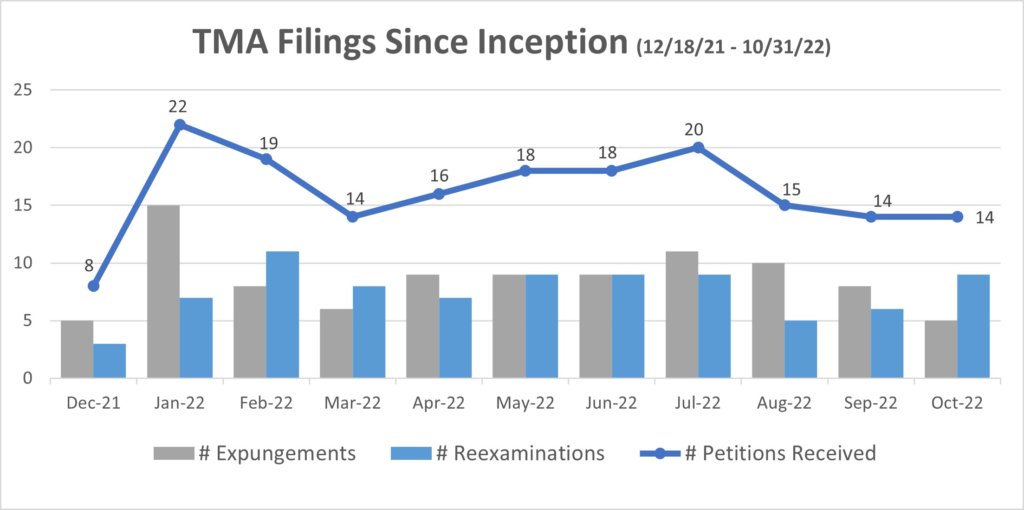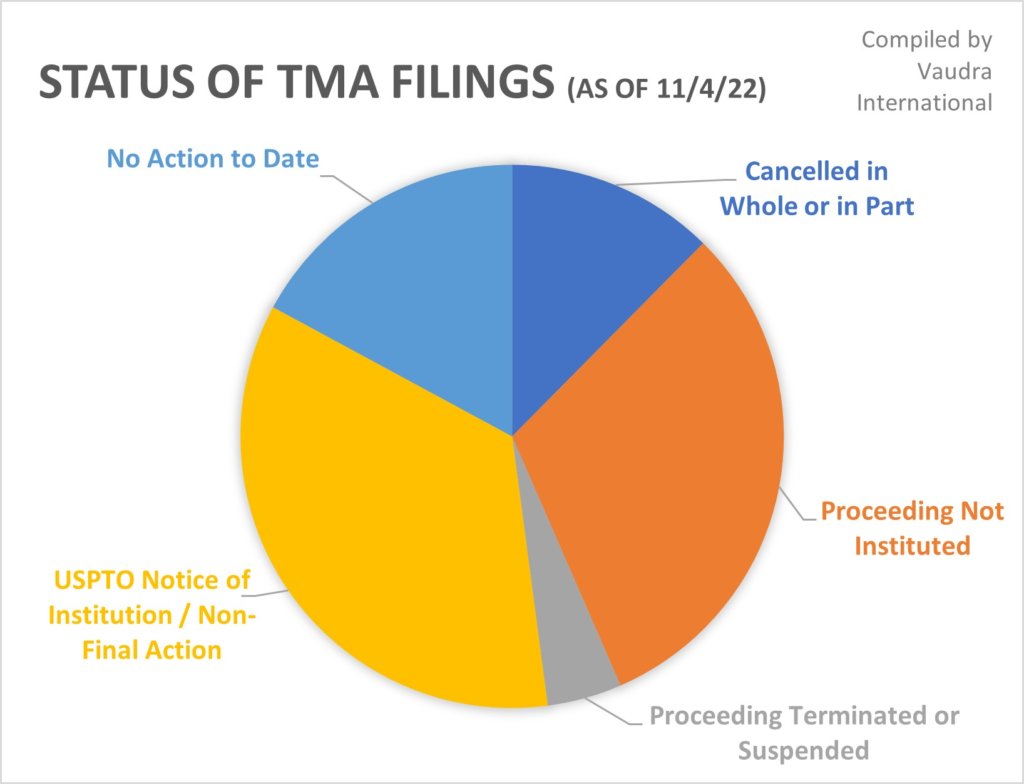A PI’s Pringles® — TMA Filings
Tamara Rabenold | November 07, 2022
In closely following the Trademark Modernization Act of 2020 (TMA) filings to date, we have the opportunity to learn from this new process, along with the successes (and failures) to date. While my interest began as an effort to understand the reasonable investigation requirement as set forth by the USPTO to ensure that our investigations support clients in the best way possible, my fascination (bordering on obsession) has grown in reading the verified statements and seeing how the USPTO responds.
Like Pringles®, after opening the clear lid & removing the protective seal, “Once you pop, you can’t stop:” I find it equally hard to stop the TMA research once I start. Beyond the obvious, a key difference between the TMA filings and Pringles® is that you eventually get to the bottom of the long, tubular Pringles® can, are met with disappointment, and tilt the final crumbs into your mouth. With the TMA, there is no such disappointment (although you may find the USPTO’s decisions crummy on occasion)!
While the bottom is clearly marked by the first expungement filing on December 21, 2021, by Eric Perrott of Gerben Perrott PLLC (who is on our TMA Ex-Filings panel for Alt Legal Connect 2023), you will never run out of filings as the list grows by an average of 16 new petitions each month. Plus, the contents, from oldest to newest filing, keep shifting as petitions make their way through the expungement or reexamination process at various speeds.
Enough about Pringles® – let’s look at a few statistics. These statistics were compiled based on what was publicly available through the USPTO through November 4, 2022.
One week into November, no new filings have been published this week, but the USPTO is diligently working through the existing petitions based on 11 notices of non-final actions or proceedings not instituted. As cited from one such notice, the USPTO’s notice of non-final action opens a window for the respondent to submit a “response or a request for a one-month extension of time to respond within three months of the issue date or the registration will be cancelled in whole or in part based on the goods and/or services involved in the proceeding.”
Since the TMA’s inception, there have been 178 petitions filed. Based on the original filings, it is nearly an even split between expungements (53%) & 47% reexaminations (53%).

In considering the status of these petitions, the pie chart reflects the latest.

Generally, it appears that the USPTO is reviewing petitions within approx. 45 days of receipt, equivalent to 85% of petitions filed to date. The USPTO sent petitioners 30-day letters with a point of clarification or correction in 19% of cases. There are ~15% of petitions where no action or progress has been published, mostly those from October or September. There are a few petitions without movement that are exceedingly older, including five (3 reexaminations; 2 expungements) from July, one (reexamination) from June, and one (expungement) from August.
A total of 11% have made it to completion with cancellation of the contested trademark in whole or in part. Proceedings were not instituted in nearly 30% (~28%) of cases. As the greater IP community becomes more familiarity with the suitable application of the TMA and what evidence is required to prove a prima facie case by the USPTO’s standards, I would expect this percentage to decrease.
Of the small number of proceedings that have been terminated or suspended (4%), half of them had happy endings for petitioners because they were either converted to cancellations or the Director instituting proceedings instead.
In considering petitions where the USPTO has issued a notice of non-final action and the three-month window to respond is currently open (58 filings), the respondents’ response rate is over 30%, which often includes filing for the 30-day extension within days of the expiration of the response period. Based on the USPTO’s substantial responses to respondents, even if the argument did not sway the examiner’s final action, it is possible that we start seeing the overall TMA process lengthen as more respondents choose to fight the non-final actions.
While reviewing the petitions, there are 125 law firms represented across the 178 filings to date. Fewer than a handful were filed by non-attorneys. Just dipping a toe in the TMA waters, nearly 100 firms have filed one petition and 16 firms have filed two. There are nine firms that have filed between 3-5 petitions, and a single firm is currently in the lead with 9 petitions. Below is the list of the top three firms based on the number of petitions filed.
| Law Firm | # Petitions Filed |
| Haug Partners LLP | 9 |
| Perkins Coie LLP | 5 |
| Panitch Schwarze Belisario & Nadel, LLP | 5 |
In growing more comfortable with the process, striking the right balance of documentary evidence to support the prima facie case and as more USPTO’s decisions are made final, we continue to learn from the wins and losses with each proceeding, right along with the petitioner. While the easiest route to a successful proceeding may be when the respondent does not reply within the response window, the exchanges between the respondents and the USPTO examiners will be something to watch and learn from as well. With the response window currently open for 70% of the USPTO’s non-final action notifications to date, opportunities abound to continue broadening our understanding.